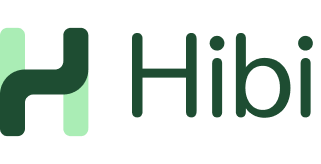
Inclusive language 101: a parent-carer’s guide
by Melanie Dimmitt
Feb 19, 2024
Clueless. That’s how I’d describe myself as a newly minted mother of someone who would become a charming, non-speaking wheelchair user. Back then, as I fumbled my way into the disability space, I was afraid of that very word – “disability” – and what it would mean for my son. Thankfully, he taught me. I’ve also learned a bit about disability more generally, from the disabled people, families and advocates I’ve been lucky to meet.
My son is now almost eight and, in the spirit of educating my old self, I’ve put together some of what I’ve grasped around the language to use – and not use – when talking about disability.
MAJOR DISCLAIMER. Guidance on how to speak about disability is best sought from disabled people and disability-led advocacy groups, and I’ve linked a handful in the paragraphs to come. Language is ever-evolving. I’m still (and always will be) learning as my son grows.
That said, here goes:
The definite dos
Embrace the word “disability”, because it’s not a bad one. Euphemisms like “differently abled” and “handi-capable” imply that disability – a naturally occurring part of human diversity – is something to shy away from or skirt around.
UK influencer Nina Tame, who’s both a disabled person and parent to a disabled child, calls disability a “neutral” word. She also shares great content around what ableism is and how to quash it.
It’s important to find out a person or family’s language preference. This will usually go one of two ways – identity-first, or person-first language. I personally say that “my child is disabled” (identity first), but others might prefer to say their child “has disability” (person first). Ideally, if you can, find out what your kid prefers.
How other people identify is a completely subjective thing and there’s only one way to get this right: ASK.
Remove certain words from your vocabulary. There are a number of terms that have medical origins but have evolved into contemporary slurs. People With Disability Australia provides a list of these words here, as well as appropriate language to use instead.
Get across alternative cultural identities. A person who identifies as being part of the Deaf cultural group, with signing as a first language, would be capital-letter ‘D’ Deaf. The ‘Deaf-Blind’ or ‘DeafBlind’ community is another example of a cultural identity which some people identify as being part of.
Disability itself is an empowered cultural identity – bonded by a shared resilience and pride. This is something positive to ponder on, and read more about.
The grey area
Be careful with the term “special needs”. Yes, it’s still widely used among parent-carer circles and by education systems, but for many in the disability community, it’s a “don’t”. As disability advocate Ashley Harris Whaley says, “No person’s needs are special. Don’t you hear how othering that sounds? They’re just human needs, y’all!”
Think about swapping “able-bodied” for “non-disabled”. Why? Because if this is the binary we’re going for, it makes out that all people with disability don’t have bodies that are healthy and strong. This is not always the case, with disabled athletes being an obvious example to the contrary. Best to stick with non-disabled/disabled.
We’ve moved on from “high functioning” and “low functioning”. These terms have long been bandied about in the autism space but they’re now thought – understandably, as they sound more like they relate to a robot – to be lacking in humanity. They can be traded for “high support needs” or “low support needs”.
The definite don'ts
Never buddy up disability with negative words or concepts. People are not “confined to” their wheelchairs, or “wheelchair-bound”. As I said earlier, my son is a “wheelchair user” - and those wheels help to take him anywhere and everywhere he wants.
The same goes for “suffering with” a disability or condition - don’t say it. And let’s scrap “victim of” and “afflicted by” a disability or condition while we’re at it. Someone is disabled, or “has” their disability (eg: she has Down syndrome). Simple as that.
Avoid buying into “inspiration porn”. This term was coined by the late Australian disability activist, Stella Young, to describe how non-disabled people, knowingly or not, objectify those in the disability community. Find out more by watching Stella’s TED talk and, as a general rule, avoid calling anyone with disability “inspirational” or “heroic” for doing everyday things.
Don’t talk about disability or difference as something to be “fixed”. Disability does not make someone broken. And while I’m wary of the word “normal”, I think these words from disabled teacher and author Kristine Napper really hit the nail on the head:
“Being normal means being different. Having a disability is one of the MANY ways to be normal.”
It took years for me to understand this – and my son was five by the time an interaction with a trainee paediatrician made me realise how far I’d come. After biting my tongue through a lengthy, clinical discussion about Arlo’s “issues” and “prognosis”, this trainee’s final question tipped me over the edge: “If you could fix one thing about your son, what would it be?”
“Nothing,” I responded. “My son doesn’t need fixing. I’d fix the world for him. And I’d fix language like yours.”
Read more: the UK Government has an inclusive language guide, as does the Australian Government and the US National Center on Disability and Journalism.
We’d love to know what you’ve learned about words and language since becoming a parent carer. If you’d like to share some of your story, please drop us a line on hello@hibi.health.
